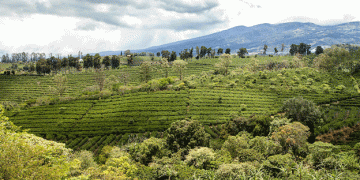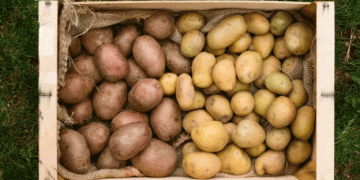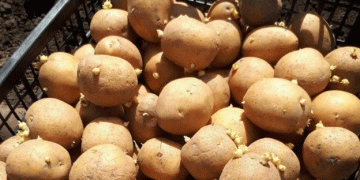The California Leafy Greens Marketing Agreement (LGMA) released its first audit report since the group was formed in 2007. A total of 368 audits were conducted between July 23 and Dec. 31, 2007, on the farms of the 116 members. The results show promise in a voluntary, industry-led organization maintaining the safety of fresh and fresh-cut products.
Audit Results
During the 368 individual audits, the inspectors verified nearly 68,000 checkpoints. Members were in compliance more than 99 percent of the time, with each audit area scoring a compliance rate higher than 99 percent.
Member companies were audited with a detailed, 23-page checklist that totals 184 checkpoints in five general areas
-General requirements – Member companies must have a written food safety compliance plan, an updated list of growers and a written traceback program.
-Environmental assessments – Pre-season and pre-harvest assessments are required that monitor the area around the growing operation, including animal intrusions, flooding and animal feeding operation proximity.
-Water use – All sources of water must be tested and how the water is used must be recorded as part of the audit program.
-Soil amendments – Testing, certification and recordkeeping of all soil amendments, including composts and fertilizers, is required.
-Worker practices and field observations – Auditors watch workers in the field to see if the company is complying with education programs and field sanitation practices.
Fifty-eight percent of the member operations had no violations or had minor infractions that were corrected on site with the inspectors present. The remaining 42 percent of farms required corrective action, but their total audit checkpoints were still in compliance with the agreement’s food safety standards.
A total of 457 citations were issued during the six-month audit period by the government inspectors. Most were for minor infractions or minor deviations and were corrected that day or within a few days, according to the LGMA audit report.
A minor infraction does not necessarily increase risk associated with the product, and corrective action can be taken on site. Multiple minor infractions can result in a minor deviation. Thirty-eight percent, or 174 of the 457 citations, were minor infractions.
A minor deviation citation is issued when practices on the farm don’t follow LGMA guidelines, but the risk to food safety is not necessarily higher. More than half of the citations issued were for minor deviations. Companies that were issued these citations have five business days to submit a corrective action plan to LGMA. All did so, according to the audit report. If a company is cited for the same violation within a 12-month time period, it may be cited for a major deviation.
Only 39 major deviations were identified during the audit period, or 8.5 percent of the total audits. This citation is identified as a violation of LGMA guidelines that “may inhibit the maintenance of food safety, but does not necessarily result in unsafe product,” the report states. Three major deviations in a year will result in a flagrant violation. Companies that were cited for major deviations were required to submit a corrective action plan within five business days and submit to an on-site inspection within three business days.
Thirty-one of the 39 major deviations were for inadequate recordkeeping. Missing water testing records and an incomplete food safety compliance plan were mentioned in the report as examples of major deviations involving recordkeeping. Three of the 39 major deviations were for animals too close to irrigation sources, one was for inadequate testing of water that was sprayed on roads to keep dust down, one citation was for toilets that were situated too far from the work crews, one company had an inadequate worker education program, one was for uncovered materials left in the field overnight and one was for a piece of harvesting equipment that was leaking oil. In each case, corrective action was taken, according to the LGMA audit report.
A flagrant violation is the highest level of citation that a company can receive. Only three companies received flagrant violations, less than one percent of the total citations issued. In those cases, auditors determined “the preponderance of evidence shows that the member company knew, or should have known exercising reasonable diligence, that the practice did not conform to the measurable practices established in the LGMA, and the violation significantly increased the risk of delivering unsafe product into commerce,” the report states.
Three such citations were issued, with penalties that range from temporary to permanent decertification by LGMA. Growers that have decertification actions taken against them are listed on the LGMA Web site, www.caleafygreens.ca.gov. Decertified companies also cannot use the LGMA service mark and cannot sell product to customers in Canada or Mexico, which require that imported product come from LGMA member companies.
One company was issued a flagrant violation after refusing to submit the government audit following repeated minor citations, the audit report states. That company was decertified for two weeks and was not eligible for recertification until a successful compliance audit was completed. That company has completed the requirements and is recertified by LGMA.
The second flagrant violation was issued to a company that failed to correct a number of citations. The company had failed a government audit and had not yet qualified for LGMA certification, the report states, and has been declared ineligible for certification until April 2008.
The final flagrant violation was for failure to meet recordkeeping guidelines. Failure to take corrective actions resulted in that company’s decertification for two weeks and can’t be recertified until its recordkeeping meets the LGMA guidelines.
As of early March, no companies were listed on the LGMA Web site as having decertification actions taken against them. Six companies are listed as pending certification, including two that were listed as ineligible for certification until April.
Survey Results
As part of LGMA’s ongoing mission to ensure that the leafy greens grown by its member companies is produced under the best practices, the board commissioned a study to see how business practices have changed following the September 2006 recall of spinach. The survey, sent to all LGMA members in November, indicated that more money is being spent on food safety than ever before, companies are expanded their food safety positions and testing is occurring more frequently. Dennis Tootelian of Tootelian & Associates conducted the survey, which had a response rate of almost 42 percent for the 13-question survey.
According to the survey results, about 75 percent of the member companies spent more than $10,000 a year on food safety before September 2006, with the average amount spent totaling about $210,000. Following the spinach recall, More than 90 percent of the responding member companies spend more than $10,000 annually on food safety, with the average amount spent nearly tripling. According to the study, the average amount that a company spends on food safety each year is almost $605,000.
The total investment in food safety from the responding companies was more than $24 million. If those numbers are extrapolated to the entire LGMA membership, the total investment is estimated at more than $71 million, three times the amount spent before September 2006, according to the study.
The study also indicated there is a greater number of food safety professionals working for member companies. Before the spinach outbreak, 70 percent of the responding companies had at least one employee dedicated to food safety, with the average being about one employee per company. In the year and half following the crisis, 90 percent of the member companies now have at least one employee working on food safety, with the average company having slightly more than two food safety employees. The results indicate that not only are more companies employing food safety personnel, they’re hiring more of them.
More than 75 percent of the member companies already conducted water tests before September 2006, but that number is now 100 percent. The number of tests conducted each month has increased five-fold, however, with the average company conducting more than 52 water tests each month. With an average cost around $70 for each test, leafy greens growers in California are spending more than $3,600 a month on water tests, the study stated.
Traceability is a requirement for LGMA certification, and many of the member companies – almost 90 percent – already had written protocols. After September 2006, more than 60 percent of the companies chose to expand their traceability programs – especially companies shipping less than 100,000 pounds of leafy greens annually.
One of the concerns with the environmental assessments has been the loss of farmland due to animal intrusions or buffer zones because of the farms’ proximity to rivers or feedlots. Thirty-five percent of member companies reported no loss from animal activity, 35 percent lost less than 20 acres and 30 percent lost more than 20 acres. Larger shippers typically lost more land to animal intrusions, with the average acreage lost at about 37 acres, or less than 2 percent of total acreage.
The same trend was indicated with buffer zones. Larger shippers had a tendency to lose more ground from buffer zones. Eighteen percent of the member companies that responded to the survey lost more than 20 acres, 36 percent lost less than 20 acres and 46 percent lost no acreage. The average amount of growing area lost to buffer zones was slightly more than 91 acres, about 1 percent of total acreage. As a percentage of acreage lost, medium-sized shippers fared the worst, although they lost less actual ground than large shippers.
The government audits and survey of LGMA members shows that the industry’s commitment to food safety is taking hold. During the audit period, no member companies issued food safety recalls, an indication that the best practices in the growing, handling and shipping of leafy greens can help prevent contamination.
However, food safety is only as good as the science guiding it. The industry has invested in research but more is needed into how pathogens are spread in real-world situations. Industry guidelines have to adapt to changing knowledge of how contamination occurs in field so that consumers can be assured that the healthful products they pick up from store shelves won’t make them sick.
Food safety begins on the farm, but ends with consumers. There may be more steps in between, so ensuring leafy greens are safe requires a commitment to safety on the parts of processors and shippers, as well as retail buyers and produce managers.





